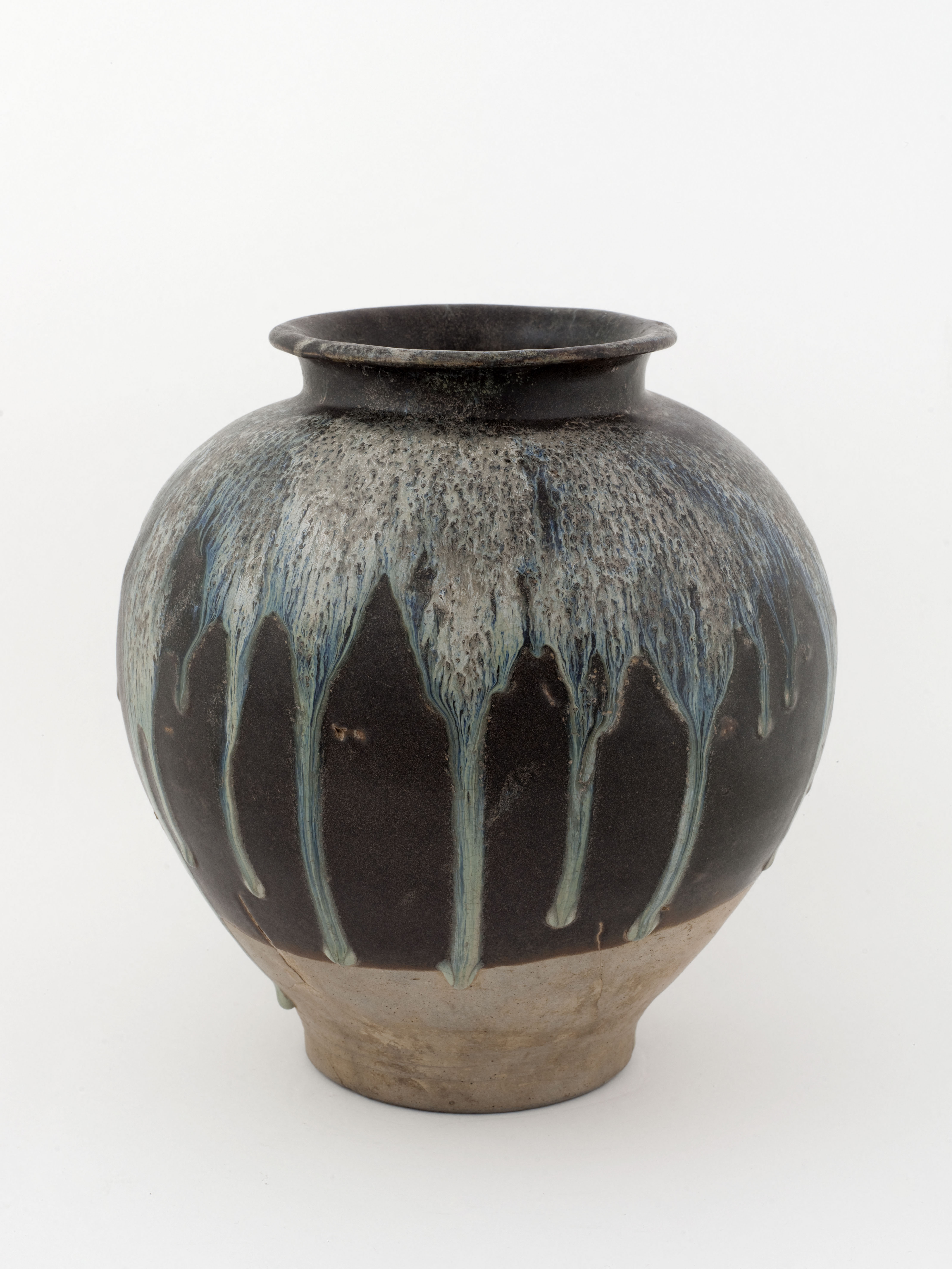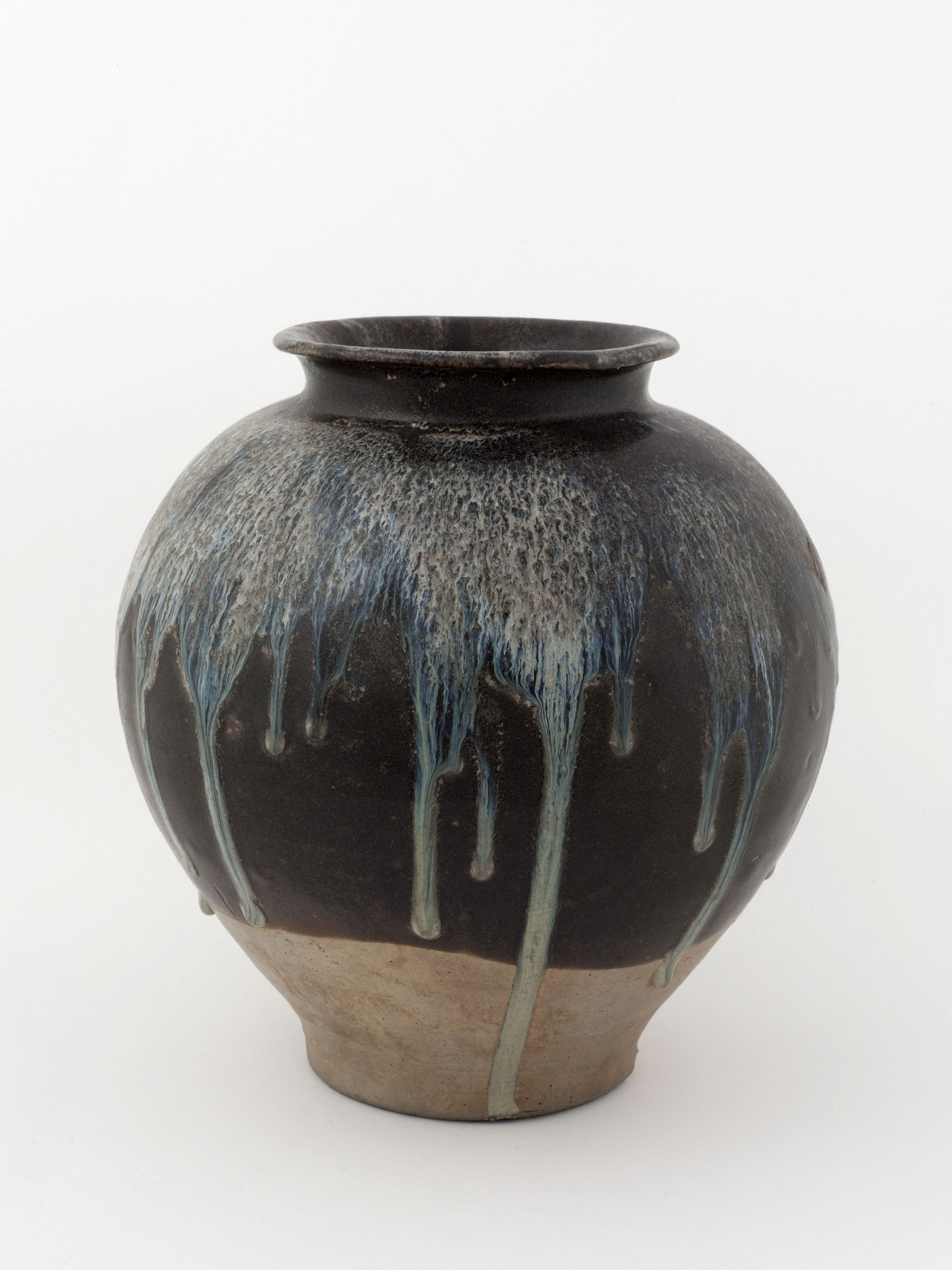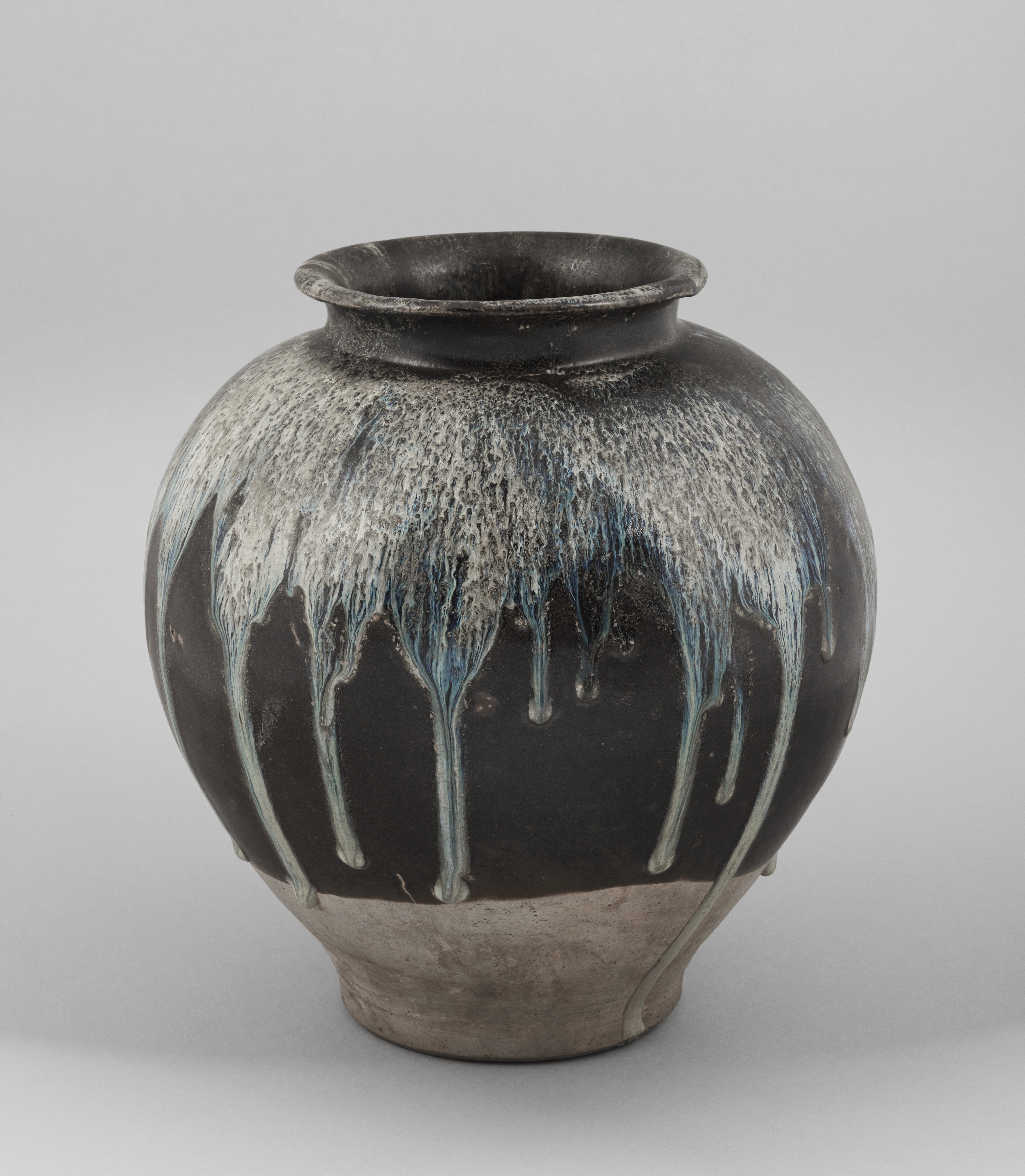
Jarre
Grès, Céramique tournée, Glaçure = Couverte
Vaisselle et ustensile de cuisine, Jarre
Don manuel : Laveaucoupet, Paul-François de
M.C. 9561
This jar, harmoniously proportioned despite its squatness, has a smooth, matt chocolate coloured glaze lightly speckled with fawn. It features foamy blueish dripping on the shoulder running down into thick droplets on the lower belly. This part of the jar as well as the flat base are unglazed, and the fawn-coloured clay bears the marks of the potter’s wheel.
Although less famous than Xing white porcelain and celadon Yue ware, the black stoneware of northern China is the foremost type of high-fired ceramics of the Tang period. In the 8th and 9th centuries, these wares produced according to traditional methods dating back to the 4th century often feature light-coloured splashes. This effect was produced by applying plant ash to the glaze, coloured with iron oxides. This produces liquid-liquid-phase separation in the glaze, which, homogenous at a high temperature, becomes heterogeneous on cooling. Minuscule glass crystals then form in a colloidal suspension in the material, scattering the light. Firing was not prolonged until the glaze matured, hence the presence of lighter-coloured speckling. These material effects echo the same, very free aesthetic of sancai glazed pottery.
These stonewares were mainly produced in Henan but also in Shanxi, in Shaanxi and as far as Zhejiang. In the Tang dynasty, Lushan county in Henan is cited in Nan Zhuo’s Jiegulu for its drum-shaped vessels with a mottled or speckled glaze. It is hard to ascertain which kiln the Cernuschi Museum jar came from. Its suffused-glaze blurry stripes are characteristic of the Huangdao site in Jia county, Henan. The small flaws visible in the clay (dark incrustations) and in the coating (specks of material, pin heads, slight gaps) are due to insufficient preparation of the materials, which was also characteristic of this kiln. These same signs are visible on a jar in the Nelson-Atkins Museum of Art in Kansas City. This piece also has a foot whose outer wall is sloped like the base of the jar in the Cernuschi Museum. However, the latter has a matt coating and not the brilliant translucent glaze typical of Huangdao stoneware. Its dripping is also similar in appearance to that of a bo bowl in the Idemitsu Museum of Arts in Tokyo, identified by W. Watson as coming from the Duandian kiln site (Henan). It would seem premature for the time being to attribute it to a specific production centre in Henan.


